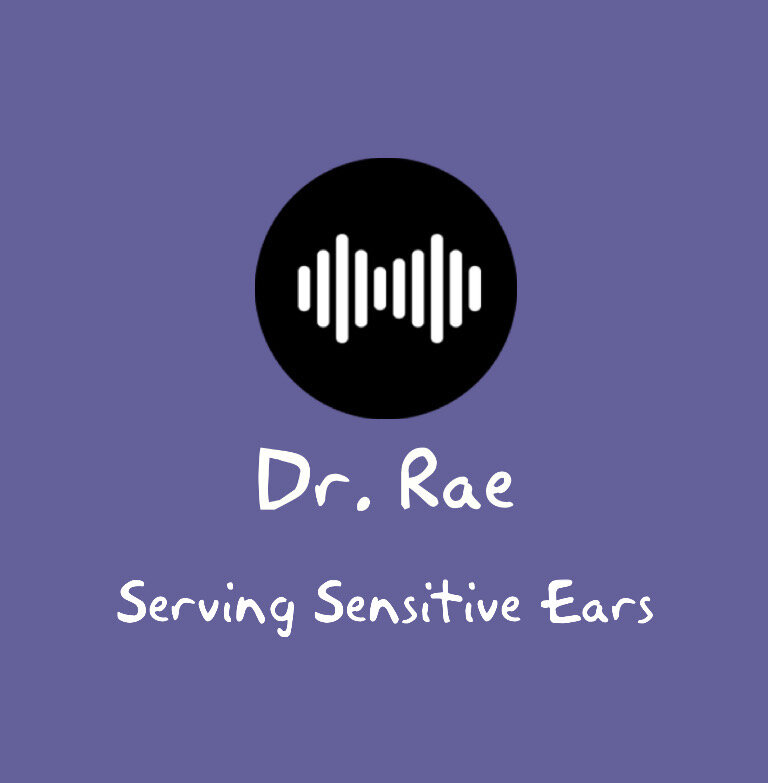
Hearing occurs in the ears, but comprehension takes place in the brain.
Dr. Rae Stout provides comprehensive testing and treatment for auditory processing, tinnitus, hyperacusis, and misophonia.
Who is Dr. Rae?
Dr. Rachel “Rae” Stout earned her Bachelor’s Degree in Hearing and Speech Sciences at the University of Maryland, College Park, graduating Magna cum Laude (1997). She completed her Master’s degree at George Washington University (1999) and went on to finish her doctorate at AT Still University (2006).
Dr. Rae, herself, grew up with difficulties in sensory processing and auditory processing, which led to her interests in American Sign Language and Cued Language. She is the pioneer of Low-Gain Programmed Hearing technology and its application with children and adults with auditory processing, sensitivity, and tolerance difficulties and disorders. To date, she has treated over a thousand patients with auditory sensitivity and filtering difficulties, including auditory processing disorders, tinnitus, hyperacusis, and misophonia.
Children and adults with auditory processing disorders often struggle to accurately perceive rhythm.
Difficulties with balance, as well as fine and gross motor coordination are also commonly reported.
Consistent use of well-programmed low-gain hearing devices has been reported by our clients to significantly augment and improve access to instrumental and vocal music.
Research has clearly shown classical music and dance training to be of considerable benefit to auditory processing.
Activities that incorporate music, rhythm, and synchronized movement have been shown to be useful in further developing these skills.
Remote and FM microphones, in conjunction with compatible low-gain programmed hearing devices, can transmit coaches’ instructions to clients that normally struggle to hear in noise or at a distance.
Experiencing Sensory Overstimulation
Our five senses directly affect our understanding of reality, and their interplay can cause heightened or dulled perceptions. The sense of taste and smell, for example, interact so that they heavily influence each other. Seeing the source of a sound, such as watching a person’s face while speaking, allows better understanding of an unclear message, particularly in noise or other difficult listening environments.
These sensory interactions, although often positive and pleasurable, can also cause negative reactions, particularly in children and adults with sensory processing difficulties, including auditory processing disorder. Feelings of sensory overwhelm or overstimulation are often worsened the more senses are involved.
Imagine attending a party. Loud music you can hear and feel, pounding against you, the sound of eating and drinking, the smell of food and drink, the rhythmic flash of strobe lights, and the heat and physical pressure from people brushing too close, too close, in your personal space. A friend leans up against you and tries to talk to you through the noise. You feel their lips brush against your ear, but you just can’t make out what they are saying.
Suddenly, you realize, you just can’t take any more sensation. You feel dizzy and hot. Your heartbeat speeds up. The sound suddenly seems louder and LOUDER. Your clothing feels sticky and stiff, constraining you. It’s hard to breathe. You need to escape!
You elbow and shove your way toward a hallway and into a dark room. After a few minutes, you cool down and calm down. You wonder what your friend had been trying to say to you. You wonder if they are upset that you disappeared. But the idea of returning to the chaos of the party is so distasteful, you instead choose to sit alone in the dark to unwind, your ears continuing to ring from the aftermath of the party.
Let’s reimagine this scene with well-programmed low-gain hearing technology. With control of the loudness of the party and better understanding of your friend, the sheer overwhelm of the scene would be considerably less. Having the ability to decrease noise and enhance speech allows your brain the ability to better filter the other sensory distractions. Perhaps the flashing strobe lights wouldn’t feel so mesmerizing or the heat of the room so invasive.
In many ways, our brains are much like computers. We each only have a limited amount of inherent processing capability. For children and adults with sensory filtering difficulties, there often is a reduced ability to tolerate the intrusiveness of distractions, stimuli that others might easily ignore. Through the external use of filtering, using adaptive technologies ranging from temperature control clothing in order to increase tolerance of extreme weather, to polarized sunglasses that change in response to varying degrees of light, we are able to increase our ability to maximize our performance in the elements.
Similarly, low-gain programmed hearing devices, when customized with care and experience, grant the consistent wearer a personalized and highly responsive computerized system; a tool which optimizes allows access to meaningful sound, while minimizing interruption from distracting background noise. Over time, as the mind accustoms to their use, many clients and their loved ones report considerably fewer sensory tolerance issues, as well as notable decreases in emotional upset and overall fatigue.




